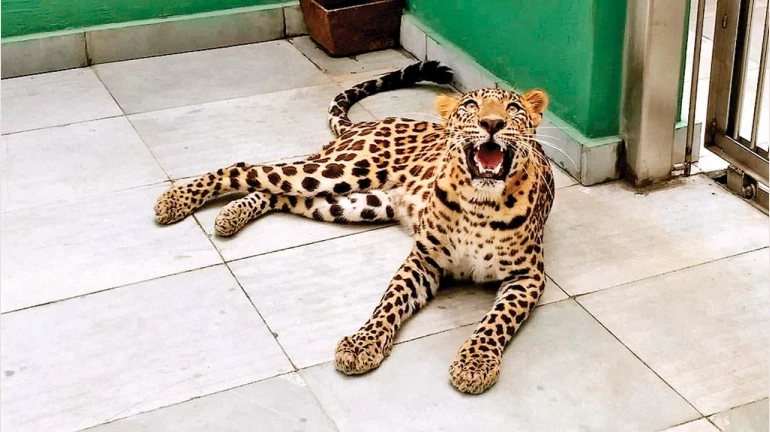
Leopards in Mumbai have adapted to living alongside people in the urban environment, according to a recent study conducted by the Wildlife Conservation Society-India Programme (WCS-IP).
It was the first-ever radio telemetry project in Mumbai over the past two years tracked five leopards' movements using GPS.
Two male leopards, Maharaja and Jeevan, and three female leopards, Savitri, Kranti, and Tulsi, were involved in the study. The research found that collared leopards frequented regions with high human population at night but had few direct interactions with people.
The study tracked 97 feeding occasions and discovered that 79% of the leopard's diet consisted of domestic prey. Domestic animals can attract leopards, and the only means of preventing this is to maintain a clean human environment. The leopards did consume birds, black-naped hares, spotted deer, sambar, langurs, wild pigs, bonnet macaques, and rhesus macaques as well as other animals.
The study's preliminary findings indicate that collared leopards frequently slept throughout the day in the heart of the Sanjay Gandhi National Park and the Tungareshwar Wildlife Sanctuary. Collared leopards frequented populated areas when there was little human activity. Forest officials predict that there are at least 45 leopards in the 104 sq km park.
Maharaja, one of the collared leopards, traversed the Vasai-Panvel railway line and the Chinchoti-Bhiwandi road six times. The other male, Jeevan, was discovered 15 times crossing the congested Ghodbunder road. His movements suggested that he periodically sat by the side of the road to survey it from a safe distance before crossing. His actions have assisted officials in coming up with precautions for the Ghodbunder road elevated corridor project to prevent accidents.
Kranti (L95) was captured on a video trap set up on a human trail. A video shows Kranti might have seen two men and turned around if she had known they were there. Another female leopard, Tulsi (L36), was seen being pursued by a domestic dog at a landfill that was only 20 metres away from a populated area.
The study's preliminary findings suggest that collared leopards frequently visited regions with high human populations at night when there was little human activity. However, the leopards coexist despite the fact that their ranges overlap, and they even raise young cubs only 30 metres from a human-farmed area.
The study, "Understanding Urban Leopards and their Interaction with People," published on International Leopard Day, offers valuable precautions for the Ghodbunder road elevated corridor project, encouraging a better understanding of coexisting with wild animals in urban settings.





